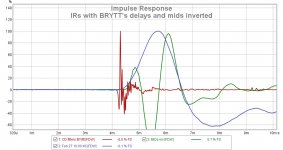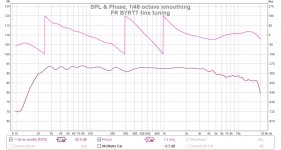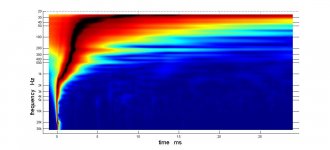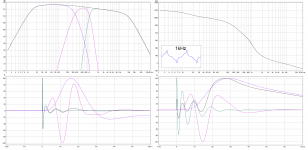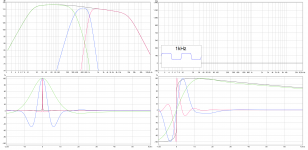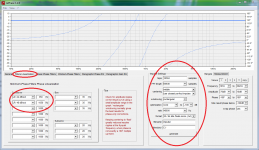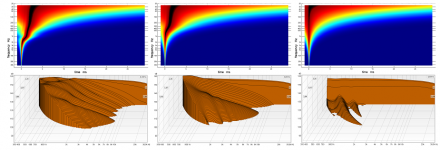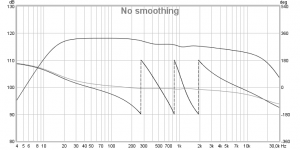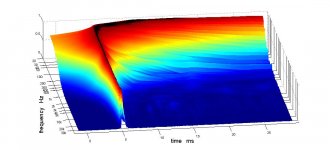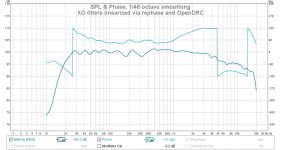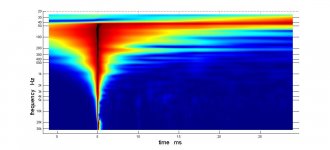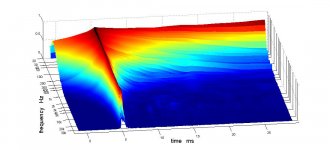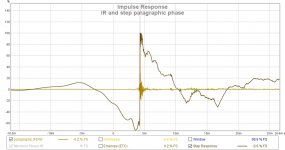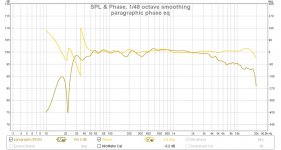With something like a LR2 we usually invert one of the drivers. But you can achieve the same by time-aligning the driver physically. Troels Gravesen does that a lot as he likes LR2. It keeps both drivers in the same polarity while still being time aligned.
You right CD alone looks have that 2nd peak also that tweeter dominate IR, below is the alligned 3x passbands model that sum to red trace.
here is what I measured plugging in your delays and inverting the mids. Looks pretty close
Attachments
Yes that is a precise definition of time alignment at a single frequency and point in space. More precisely, its a specification of a test for determining whether time alignment has been achieved there. It may be done at multiple frequencies or I suppose you could look at the response to a square wave input.
What I've been lacking is knowledge of a process for getting to time alignment, which I can infer from yesterday's conversation. Its still problematic in that the start of the rise is fuzzy. I can see from my measurement, the start includes the pre-ringing. But notice how gradually the woofer rises. I'll bet that the starting point one chooses depends on the smoothing/windowing in use. So that is just the starting point for time alignment as is subject to refinement later by other means.
What I've been lacking is knowledge of a process for getting to time alignment, which I can infer from yesterday's conversation. Its still problematic in that the start of the rise is fuzzy. I can see from my measurement, the start includes the pre-ringing. But notice how gradually the woofer rises. I'll bet that the starting point one chooses depends on the smoothing/windowing in use. So that is just the starting point for time alignment as is subject to refinement later by other means.
Did some fine tuning this AM. Surprised to see that the big dips from last night were gone. Apparently, I confused mid inverted with not inverted measurements. Today I swept the DSP delay down from 2ms to 1.85 ms, increased the mid level by .5 db and decreased the woofer level by 1 db and got this.
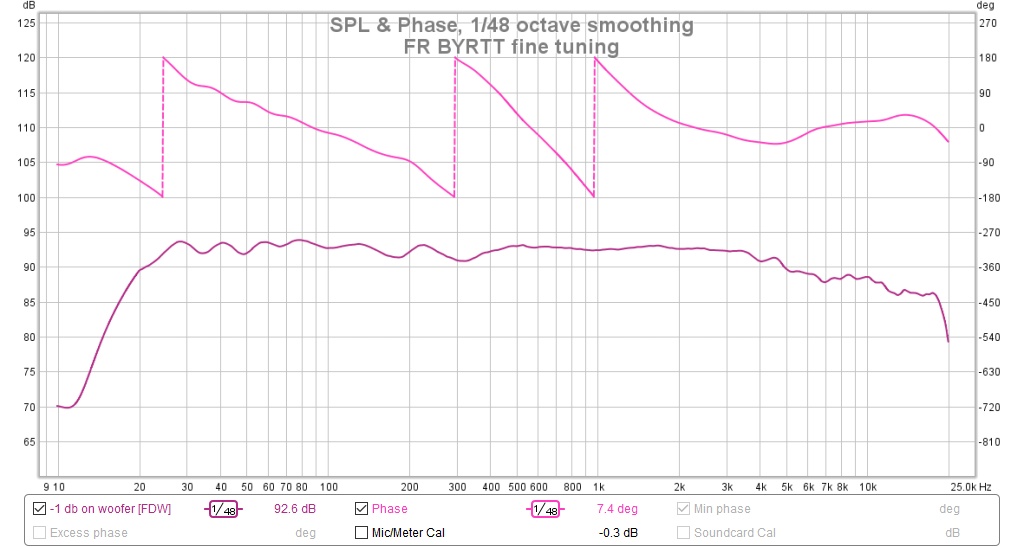
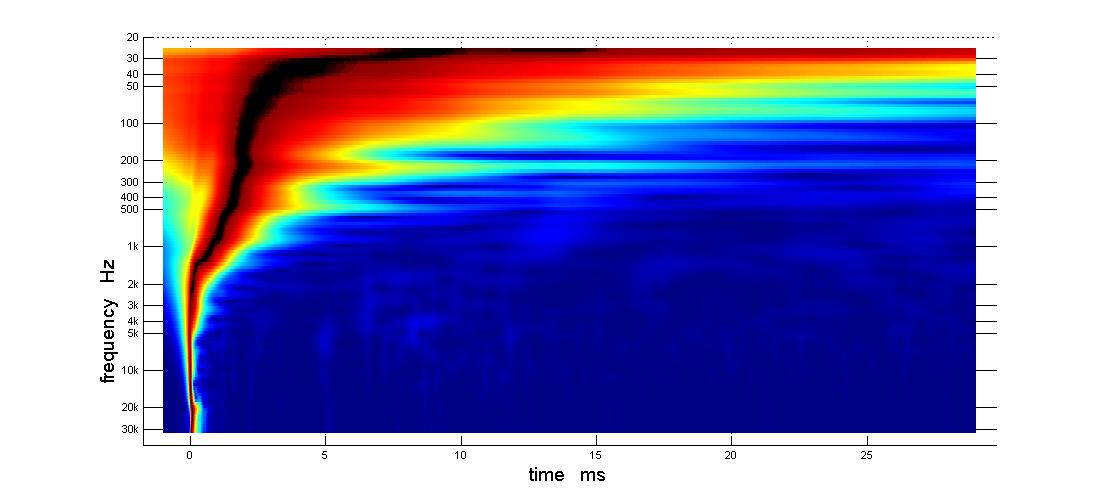
I owe BYRTT a beer!
I owe BYRTT a beer!
Attachments
Looks great 🙂 now passbands start be in same rotating phase scheme so they sum and cooperate with no tilt but a strait forward pointing lobe inside XO region.
Think now its important never to change anything in miniDSP cables or amps because if slopes data change just a bit it will need new calibration care, so any tuning for tonal house curve would have to be done upstream of miniDSP and also in you have a known IIR XO scheme should be pretty easy to linearize with filter created into Rephase.
Think now its important never to change anything in miniDSP cables or amps because if slopes data change just a bit it will need new calibration care, so any tuning for tonal house curve would have to be done upstream of miniDSP and also in you have a known IIR XO scheme should be pretty easy to linearize with filter created into Rephase.
So this I have not been able to get a clear answer on; is time alignment to be done between individual peaks or pulse starts?
//
Pulse start with traditionally minimium phase (IIR) slopes and with modern linear phase (FIR) power all over use pulse peak 🙂.
Attachments
Okey, so both start and peak can be used? Do you mean that the left picture is what can be achieved with the combo of IIR filters and ordinary delay and the right one only obtainable if FIR phase compensation can be applied?
By "all over" do you mean that it is commonplace?
Thanks for your answer!
//
By "all over" do you mean that it is commonplace?
Thanks for your answer!
//
Am I heading in the right direction?
I'm using RePhase paragraphic phase EQ for the first time. I had to set the view to +/-720 degrees to see the full range of unwrapped phase and then used 3 banks to flatten the phase; each bank being limited to 180 degrees of correction. First bank got me from 20 Khz down to the 1050 xo's phase wrap. 2nd bank to the 2nd wrap and 3rd bank to finish it off. At what frequency should i stop corrrecting?
I hate to stop listening long enough to test a new filter
I'm using RePhase paragraphic phase EQ for the first time. I had to set the view to +/-720 degrees to see the full range of unwrapped phase and then used 3 banks to flatten the phase; each bank being limited to 180 degrees of correction. First bank got me from 20 Khz down to the 1050 xo's phase wrap. 2nd bank to the 2nd wrap and 3rd bank to finish it off. At what frequency should i stop corrrecting?
I hate to stop listening long enough to test a new filter
Okey, so both start and peak can be used? Do you mean that the left picture is what can be achieved with the combo of IIR filters and ordinary delay and the right one only obtainable if FIR phase compensation can be applied?...
Yes left picture is IIR filtering hinted in the rotating phase curves, it rotate from DC component to lightspeed 2x 180º because of system stopbands plus 1080º caused by XO points LR4 350Hz and LR8 1050Hz and finally some small 15º caused by B&K tonal curve.
...By "all over" do you mean that it is commonplace?...
By all over mean that beside XO filters also system stopbands at 15Hz/20kHz and B&K tonal curve is created with FIR filters so phase is super flat from DC component to lightspeed. This gives the curves in right picture but in real world would recommend use IIR filters for system stopbands and tonal house curve, recommendation is based good advice from wesayso and real world listening tests which reveal rhytm timing problems going super flat phase, and reason is probably because audio tracks is created on IIR systems so we can be going too far for phase repair and ruin the timing that artists had under recording if you know what i mean.
Am I heading in the right direction?
I'm using RePhase paragraphic phase EQ for the first time. I had to set the view to +/-720 degrees to see the full range of unwrapped phase and then used 3 banks to flatten the phase; each bank being limited to 180 degrees of correction. First bank got me from 20 Khz down to the 1050 xo's phase wrap. 2nd bank to the 2nd wrap and 3rd bank to finish it off. At what frequency should i stop corrrecting?
I hate to stop listening long enough to test a new filter
Think all you need to do is linearize some known IIR XO points so no need to load measurement into Rephase, below show that it is simple to do on "Filters Linearization" tab but use your own numbers if they different from the ones i used, finally set the correct parameters in "Impulse Settings" section TAPS/WINDOWING/RATE/FORMAT/FILENAME. For "windowing" suggest "rectangular" as long filter is phase-only corrections and probably "hann" if you also make some IIR correction for house curve into same system filter, but then you will need to load a live measurement first. TAPS/RATE/FORMAT/FILENAME will depend on hardware unit used and its demands for correct format settings.
Attachments
Think all you need to do is linearize some known IIR XO points so no need to load measurement into Rephase, below show that it is simple to do on "Filters Linearization" tab but use your own numbers if they different from the ones i used, finally set the correct parameters in "Impulse Settings" section TAPS/WINDOWING/RATE/FORMAT/FILENAME. For "windowing" suggest "rectangular" as long filter is phase-only corrections and probably "hann" if you also make some IIR correction for house curve into same system filter, but then you will need to load a live measurement first. TAPS/RATE/FORMAT/FILENAME will depend on hardware unit used and its demands for correct format settings.
Thanks!
Did some fine tuning this AM. Surprised to see that the big dips from last night were gone. Apparently, I confused mid inverted with not inverted measurements. Today I swept the DSP delay down from 2ms to 1.85 ms, increased the mid level by .5 db and decreased the woofer level by 1 db and got this.


I owe BYRTT a beer!
Now that's progress! Glad to see this graph!

I can imagine the drive from BYRTT to take this to the next level with FIR correction, however I would have chosen a slightly different path.
This is such a textbook performance (do enjoy it as much as you can!) that I would recommend looking into a fitting house curve for your listening space.
While the phase correction certainly is do-able, the right house curve is a bigger more apparent/obvious step forwards. The house curve would still have to take into account that some colouring of the sound by the room going to happen.
We've seen the room playing a role in listening position measurements. The more reflections etc. are solved (the old fashioned way with panels, curtains, carpets etc.) the less they are going to play a role in the needed curve.
The overall curve would need to take later room additions in consideration. Not an easy task. Listen to a lot of different music and genres to grow into such a curve.
I think the phase EQ is worthwhile just for the learning experience and, at the risk of uttering famous last words, looks like low hanging fruit.
As you say, my room has an effect readily seen in TDA. I've got to work to do on the reflections and I need more bass damping. With TDA_EQ I can change the house curve and adapt to room changes quite easily. The room only effects the low end, the phase corrections done on the high end won't be undone by it.
As you say, my room has an effect readily seen in TDA. I've got to work to do on the reflections and I need more bass damping. With TDA_EQ I can change the house curve and adapt to room changes quite easily. The room only effects the low end, the phase corrections done on the high end won't be undone by it.
Phase corrections do their best work on that low end though. 🙂
But to get to those benefits the room has to play nice too.
Don't forget to enjoy these fruits of your labour! Enjoy it, save the settings that got you there and lock them down. What are the exact (theoretical) crossover points?
One quick way to see how close you are would be to look at where the theory puts the phase wraps compared to the real world measurements. Only remember, in the real world a lot of other factors are at play too.
But to get to those benefits the room has to play nice too.
Don't forget to enjoy these fruits of your labour! Enjoy it, save the settings that got you there and lock them down. What are the exact (theoretical) crossover points?
One quick way to see how close you are would be to look at where the theory puts the phase wraps compared to the real world measurements. Only remember, in the real world a lot of other factors are at play too.
Agree good points from wesayso will raise systems acoustic quality and really good advice look into down the road.
Regarding use Rephase created FIR correction for theoretical known XO points, to quality check their reliability before listening think simply bypass the FIR filter and it should look close to the one at left, as the middle if M/T LR8 is corrected, and as the right one if W/M LR4 and M/T LR8 is corrected. If and when it gets close make your own judgement if its worth even in a live room reflecting enviroment, have 8th order IIR XO myself and while its good for limit stroke and get XO region power response errors so narrow as possible think it pleases and hide some information in tracks especially at these used XO frequency points.
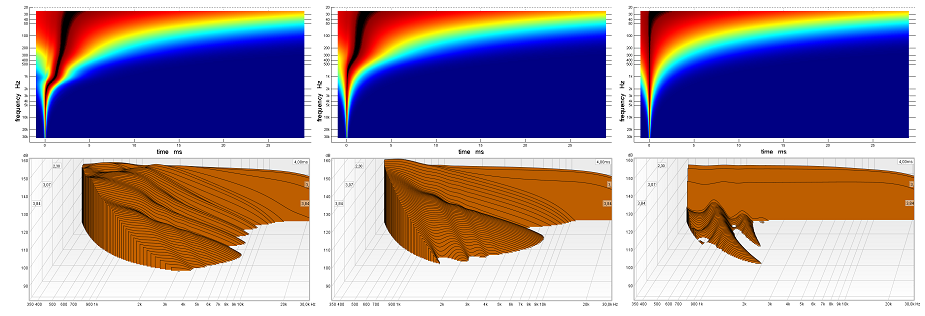
Another quality check could be into REW hit button "Generate minimum phase" and with correct settings for Rephase correction filter then measured phase should be close to that curve as seen here below for the uncorrected reference.
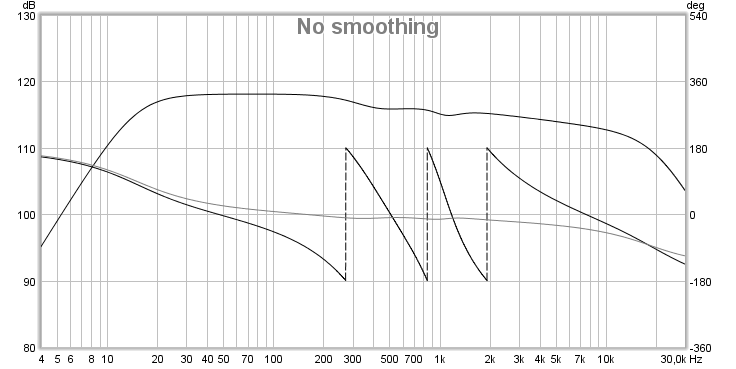
Regarding use Rephase created FIR correction for theoretical known XO points, to quality check their reliability before listening think simply bypass the FIR filter and it should look close to the one at left, as the middle if M/T LR8 is corrected, and as the right one if W/M LR4 and M/T LR8 is corrected. If and when it gets close make your own judgement if its worth even in a live room reflecting enviroment, have 8th order IIR XO myself and while its good for limit stroke and get XO region power response errors so narrow as possible think it pleases and hide some information in tracks especially at these used XO frequency points.
Another quality check could be into REW hit button "Generate minimum phase" and with correct settings for Rephase correction filter then measured phase should be close to that curve as seen here below for the uncorrected reference.
Attachments
Last edited:
This is what I get at 1m using Rephase filter linearization in OpenDRC
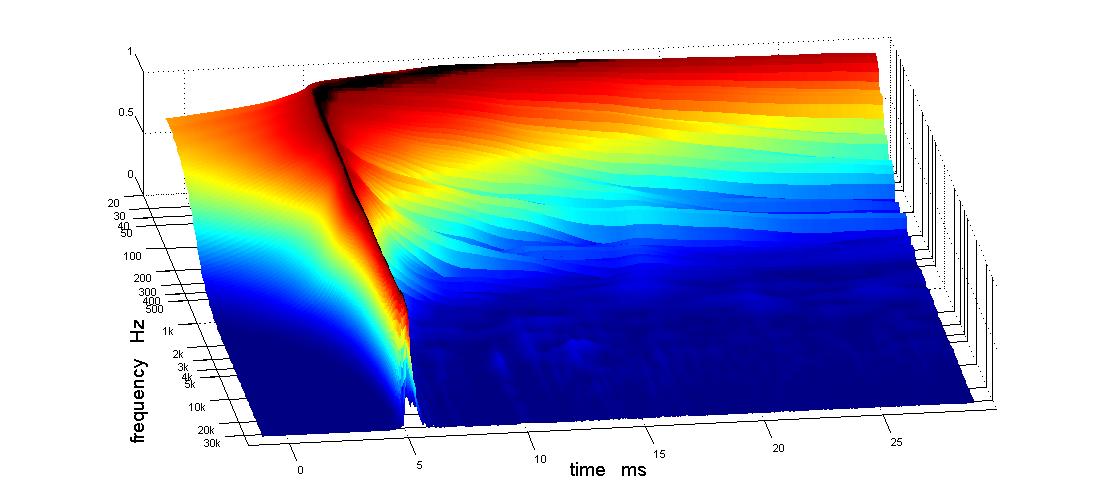
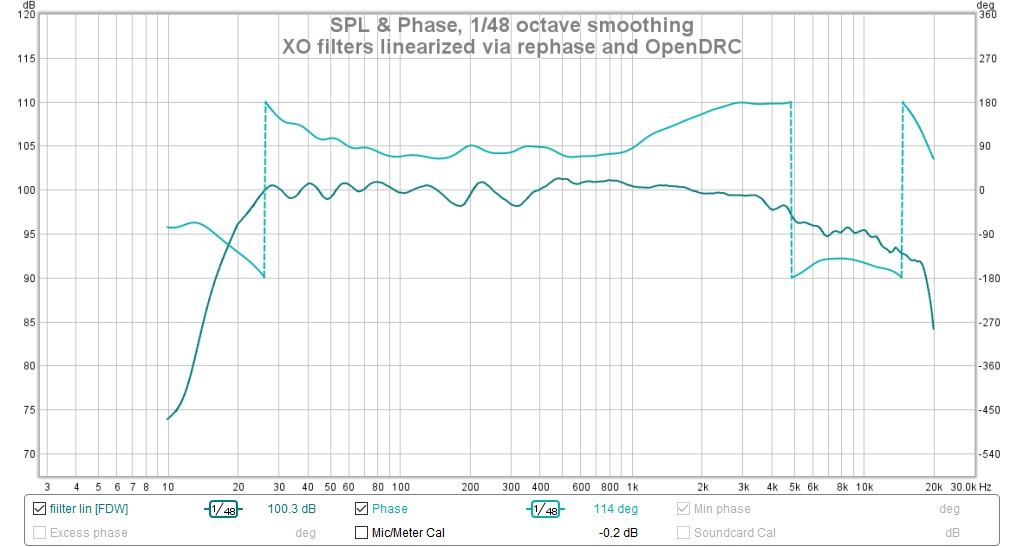
the high HF isn't getting linearized because that slope isn't covered by rephase - it only does the XO in this mode; I guess I should cover it paragraphically and fill in those dips while I'm at it
the high HF isn't getting linearized because that slope isn't covered by rephase - it only does the XO in this mode; I guess I should cover it paragraphically and fill in those dips while I'm at it
Attachments
I also did a trial run using paragraphic phase eq to cover the entire spectrum
tda3d
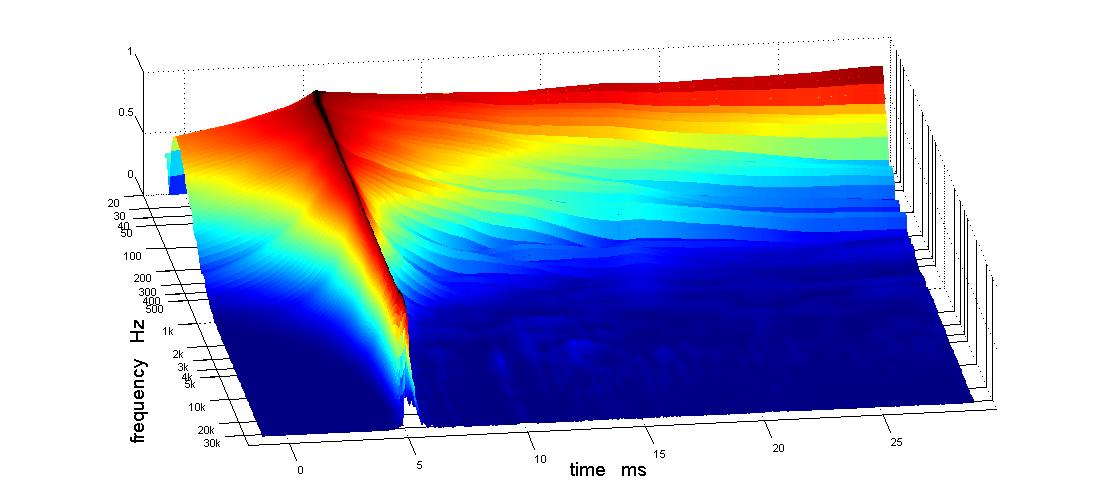
tda pl
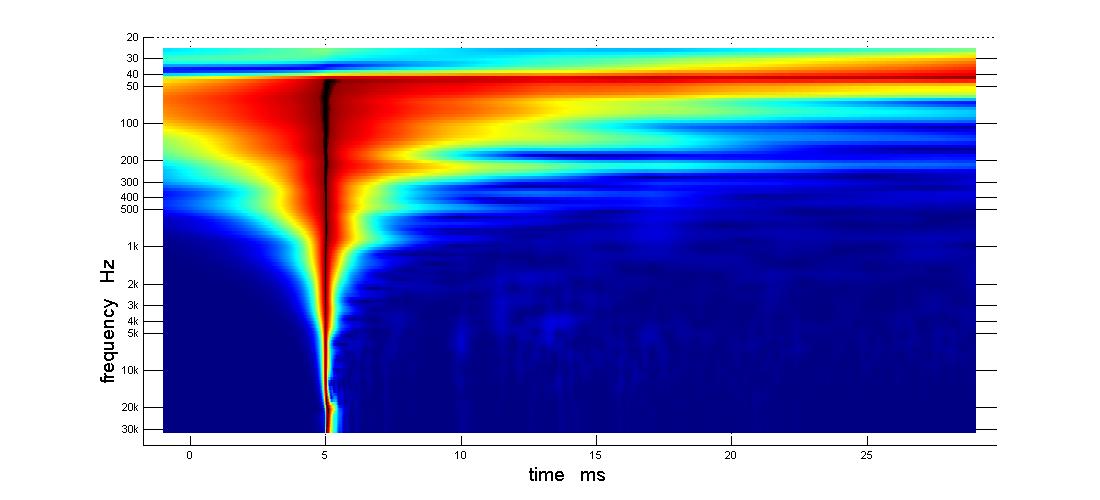
REW fr suggests I did something wrong at 22 and 35 hz
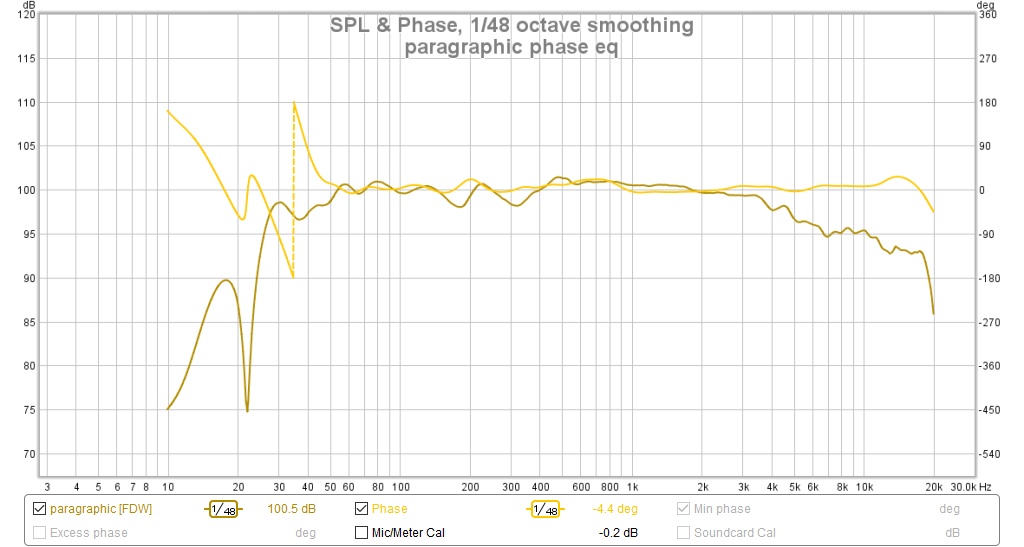
finally a step function that is somewhat presentable

tda3d
tda pl
REW fr suggests I did something wrong at 22 and 35 hz
finally a step function that is somewhat presentable
Attachments
- Home
- Loudspeakers
- Multi-Way
- My Synergy Corner Horn and Bass Bins
